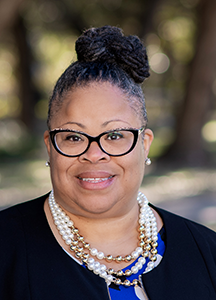• Dr. Paula Johnson • Knowledge is Power • March 17, 2022 •
The current classroom censorship debate is taking place in the larger context that is resistant to seeing the existence of systemic racism. We have even seen the word equity on lists of so-called racist terms. The truth is precisely the opposite. Educational equity ensures equally high outcomes for all students, interrupts inequitable practices and supports all students in developing their full academic and social potential. To achieve educational equity, we must examine practices at the district, school and classroom levels to identify inequities that disproportionately impact particular student groups.
Truth: Equity is not exclusionary to certain groups
Targeted interventions are necessary to achieve educational equity. There is a smoke-and-mirrors initiative swelling in education. Politicians continue to introduce new legislation across the county in an effort to convince the masses that any focus on the needs of one student group leads to the exclusion of other groups and is therefore racist in nature. Those who rally against the goals of educational equity seek to weaponize the purpose of those who are fighting for educational justice. In order to fulfill the needs of all students, we must identify and meet the needs of student groups who are negatively impacted the most.
Truth: Race-based equity initiatives do not give Black and Latino students an unfair advantage over other their peers
Black and Latino students are more underrepresented than any other student groups in advanced placement, gifted and talented, and dual credit course enrollment. At the same time, they are disproportionately overrepresented in disciplinary actions, dropout rates and special education placement. Furthermore, emergent bilingual students of color may face far more academic challenges due to the lack of campus supports.
Truth: “Equity” and “equality” are not the same thing
Educational equity means that all students’ needs are sought out and addressed to promote a positive and successful school experience inclusive of race, ethnicity, religion and gender. In contrast, equality aims to provide everyone with the same support. Systemic equity, unlike equality, aims to promote social justice through sustainable resources, support, partnerships and community engagement where all people are able to achieve their full potential in school and in life.
Ultimate Truth
There are no excuses for racism. It isn’t tied to one particular group of people. Racism can take many forms and happen anywhere, individually and collectively. Ibrahim X. Kendi provides this definition: “Racism is a marriage of racist policies and racist ideas that produces and normalizes racial inequities.”
Educational equity disrupts and eradicates all practices, policies and ideas that do not affirmatively and continually support all students and ensure inclusive and fair treatment for all.
[©2022, IDRA. This article originally appeared in the March 17, 2022, edition of Knowledge is Power by the Intercultural Development Research Association. Permission to reproduce this article is granted provided the article is reprinted in its entirety and proper credit is given to IDRA and the author.]



